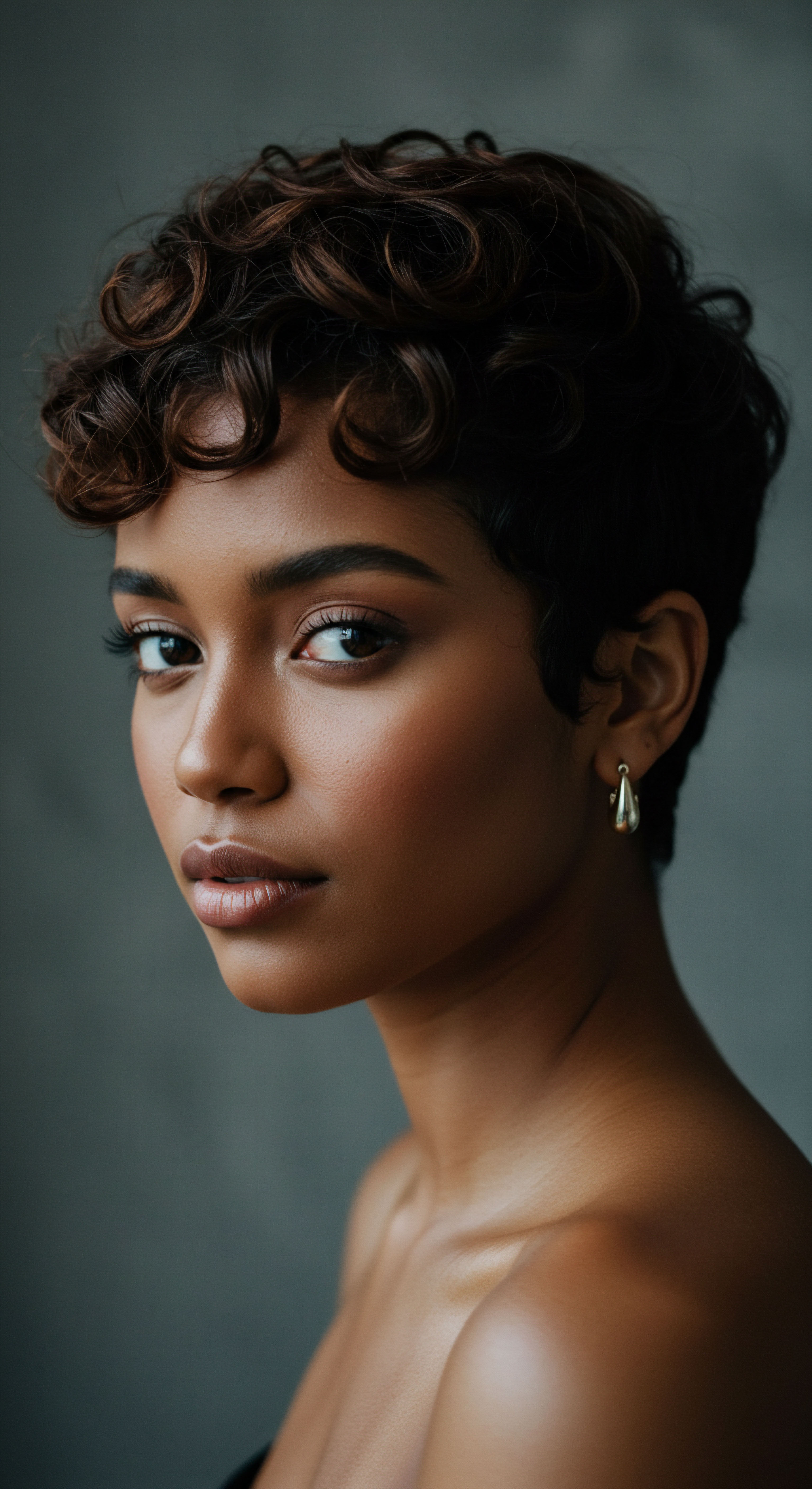
Roots
The quiet hours of night have long held a special significance for those who cherish their coils. From ancient traditions of head wrapping to the careful preparation of strands for slumber, a silent wisdom has guided the preservation of hair. This understanding, often passed through generations, reflects a deep connection to identity and well-being.
Today, a new whisper joins this ancestral knowledge, a resonance born not from folklore alone, but from the very molecules of modern innovation. How do these contemporary filaments, crafted in laboratories, truly honor the enduring legacy of nightly protection for our precious coils?
The journey of hair protection through the night is as old as the coils themselves. Across continents and through centuries, various cultures developed ingenious methods to safeguard their hair during sleep. In many African societies, head wraps were not merely adornments but held profound social, cultural, and even spiritual significance, often serving to protect hair from environmental factors and maintain intricate styles.
These practices were rooted in a practical need to preserve hair health, minimizing tangles and breakage that could occur during rest. The deliberate act of wrapping hair before sleep speaks to a universal human desire to protect what is valued, whether for aesthetic, spiritual, or practical reasons.
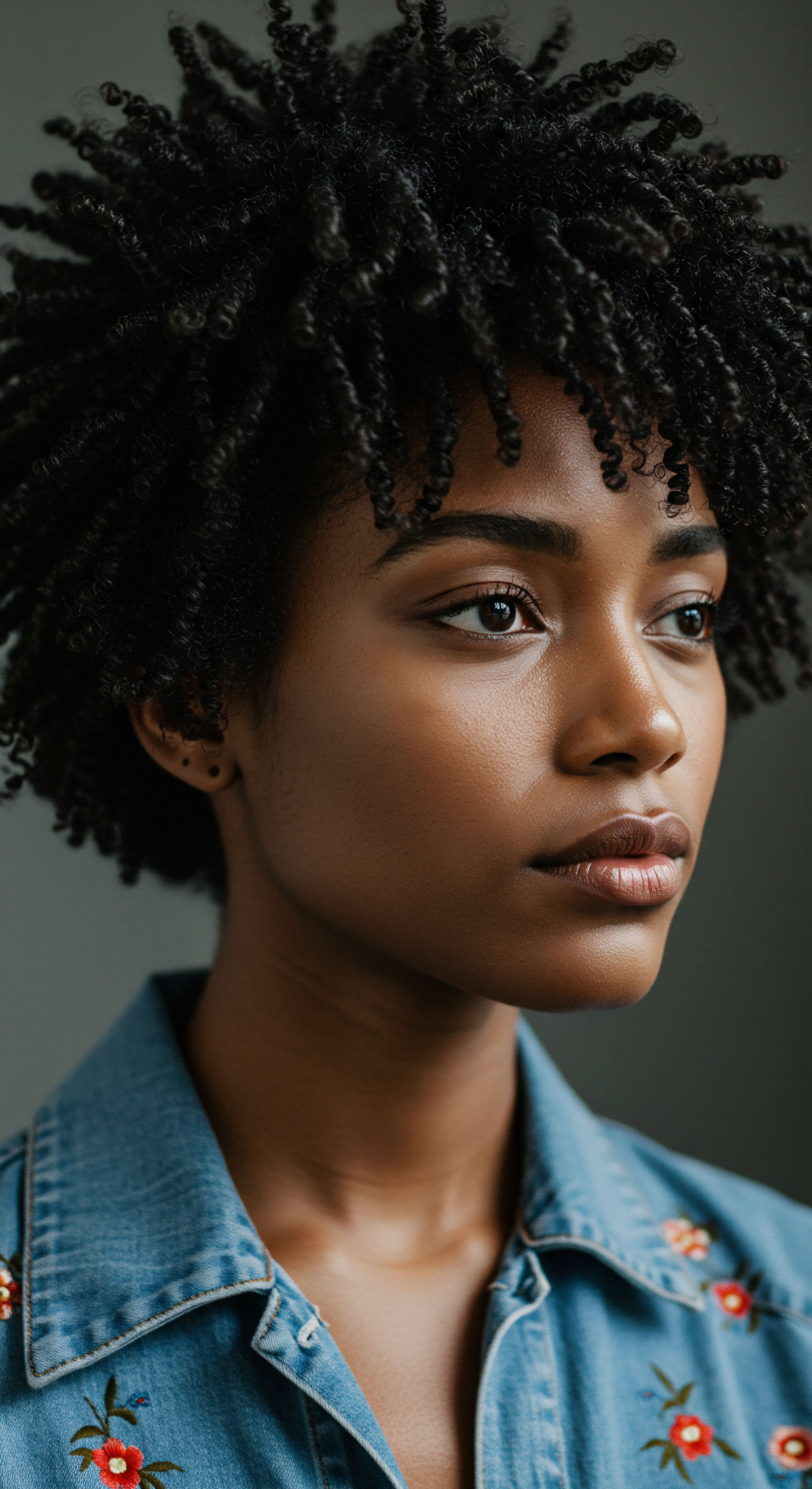
Ancient Practices and Hair Preservation
Long before the advent of modern textiles, natural materials played a central role in nighttime hair care. Historical records indicate that cultures worldwide utilized what was readily available to shield their hair. In ancient Egypt, for example, natural oils such as castor and almond oil were applied to keep hair hydrated and supple, even amidst the desert’s harsh climate.
Similarly, in Greece, olive oil served as a conditioning treatment, promoting shine and softness. These early methods, while seemingly simple, laid the groundwork for understanding the importance of moisture retention and friction reduction in hair health.
The concept of covering hair for protection during sleep is deeply embedded in various cultural narratives. African women, for instance, employed elaborate cornrows, twists, and locs, often using natural butters and plant oils to aid moisture retention, with scarves frequently used for ceremonial purposes or protection. The forced wearing of headwraps by enslaved Black women in the Americas, initially a tool of oppression, was powerfully reclaimed as a symbol of resilience, dignity, and cultural pride. This historical context underscores that hair coverings have always transcended mere functionality, carrying layers of meaning and defiance.
The tradition of protecting hair during sleep spans centuries and cultures, a testament to its enduring significance for well-being and identity.

Hair Anatomy and Nocturnal Vulnerability
Understanding how modern materials shield coils at night begins with a grasp of hair’s fundamental structure. Each strand of hair is composed primarily of keratin, a protein that forms the hair shaft. The outermost layer, the cuticle, consists of overlapping scales, much like shingles on a roof.
In healthy hair, these scales lie flat, creating a smooth surface that reflects light and retains moisture. For coiled hair, the cuticle naturally has more raised areas due to its helical structure, making it inherently more susceptible to friction and moisture loss.
During sleep, hair faces several challenges. The tossing and turning that accompany a night’s rest generate friction between hair strands and the sleep surface. This friction can lift, chip, or even break the delicate cuticle scales, leading to frizz, tangles, and ultimately, breakage. Moreover, many traditional sleep surfaces, such as cotton pillowcases, are absorbent.
They draw moisture away from the hair, leaving coils dry, brittle, and more prone to damage. The combined effect of friction and moisture depletion can compromise the integrity of coils, making morning styling a challenging endeavor.

Ritual
The gentle art of preparing coils for rest extends beyond a mere routine; it is a communion, a deliberate act of preservation. As daylight fades, our coils seek sanctuary, and here, the thoughtful application of advanced materials transforms a simple habit into a potent shield. What quiet revolutions do these new fabrics bring to our cherished nighttime rituals, allowing coils to thrive even through the deepest slumber?
The nightly ritual of protecting coils has been refined by modern material science, offering solutions that transcend traditional methods. The shift from highly absorbent and abrasive fabrics like cotton to smoother, less porous alternatives marks a significant evolution in sleep protection. This transformation acknowledges the unique needs of coiled hair, which requires a delicate balance of moisture retention and minimal friction to maintain its structural integrity and definition.
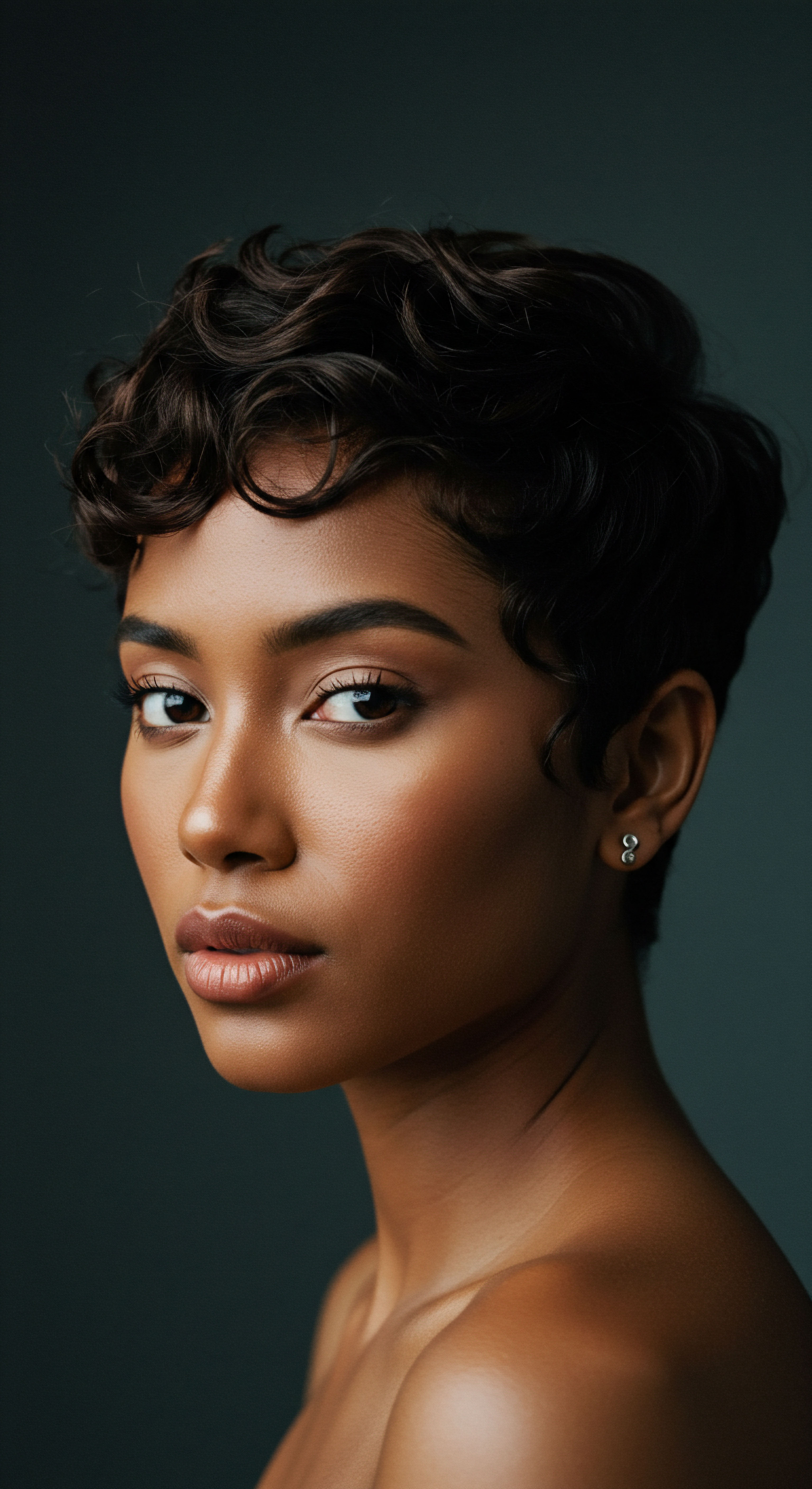
Why Traditional Materials Fall Short
For many years, cotton pillowcases and head coverings were the norm. While comfortable, cotton’s cellular structure, rich in cellulose, possesses a negative charge that actively attracts and absorbs water. This characteristic, while beneficial for towels, proves detrimental to hair, particularly coils, by drawing away essential natural oils and applied moisture. The result is often dry, brittle strands and increased frizz upon waking.
Beyond moisture absorption, the surface texture of cotton creates significant friction. As a person shifts during sleep, the rough fibers of a cotton pillowcase can snag and abrade the hair’s cuticle layer. This mechanical stress can lift and damage the cuticle scales, leading to tangles, frizz, and breakage. For coils, which naturally have more raised cuticles and more points of contact with surfaces, this friction is particularly damaging.
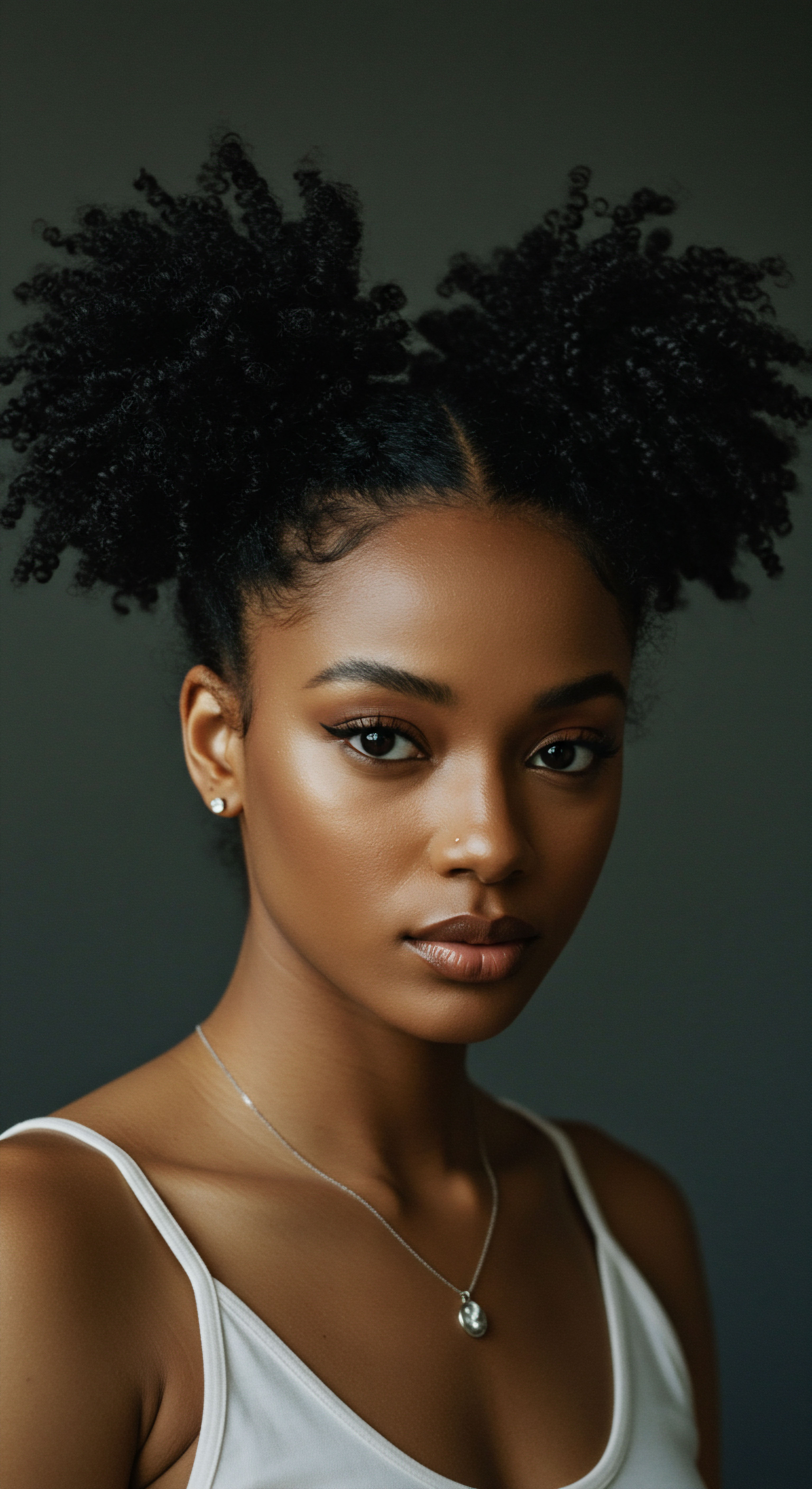
How do Modern Materials Address Moisture Loss and Friction?
Modern materials for nighttime hair protection are engineered with specific properties to counteract the issues posed by traditional fabrics. The primary contenders in this arena are satin and silk, alongside newer innovations like copper-infused textiles and advanced synthetic blends.
- Satin ❉ Often crafted from polyester or rayon, satin is not a fiber itself but a type of weave that creates a smooth, glossy surface. This weave significantly reduces the friction between hair and the sleep surface, allowing coils to glide rather than snag. Unlike cotton, satin is non-absorbent, meaning it does not wick away the hair’s natural moisture or applied products, helping coils stay hydrated through the night. This preservation of moisture helps maintain curl definition and reduces frizz.
- Silk ❉ A natural protein fiber, silk possesses an inherently smooth surface and a protein structure similar to hair’s keratin. This makes silk exceptionally gentle on coils, minimizing friction and subsequent cuticle damage. Like satin, silk is less absorbent than cotton, allowing hair to retain its vital moisture and oils. Beyond friction reduction, silk fibroin, the main protein in silk, has been shown to form protective layers on hair fibers, contributing to lubrication and smoothness. Sericin, another silk protein, boasts superior moisture retention properties and can even help boost keratin production and improve hair elasticity.
The introduction of these materials in bonnets, scarves, and pillowcases represents a quiet yet profound shift in nighttime hair care. They transform the sleeping surface from a potential source of damage into a protective cocoon, allowing coils to rest undisturbed and retain their vitality.
The advent of low-friction, moisture-retaining materials like satin and silk has revolutionized nighttime hair protection, moving beyond the abrasive nature of traditional fabrics.

The Tribological Advantage of Modern Textiles
The science of friction, or tribology, plays a central role in understanding the benefits of these materials. Hair friction against surfaces is a complex phenomenon, influenced by factors such as humidity, surface roughness, and the chemical composition of both hair and fabric. Studies have shown that a higher coefficient of friction between hair and a surface leads to increased cuticle damage and breakage.
For instance, a study on the frictional effects in human hair noted that friction from contact with various materials can wear down the hair cuticle. Modern materials like satin and silk are characterized by a significantly lower coefficient of friction compared to cotton. One investigation found that a particular low-friction fabric had a coefficient of friction (μs) of approximately 0.21, substantially lower than other pillowcase materials which measured around 1.17. This difference means hair experiences less resistance and smoother movement, directly translating to less damage.
Beyond traditional silk and satin, researchers are exploring even more advanced materials. Polytetrafluoroethylene (PTFE), known for its exceptionally low coefficient of friction (0.05 to 0.10, one of the lowest of any solid material), is used in various industrial applications for its anti-friction and non-stick properties. While not commonly found in direct hair accessories yet, the principles behind such materials hint at future possibilities for even more advanced, frictionless sleep surfaces.
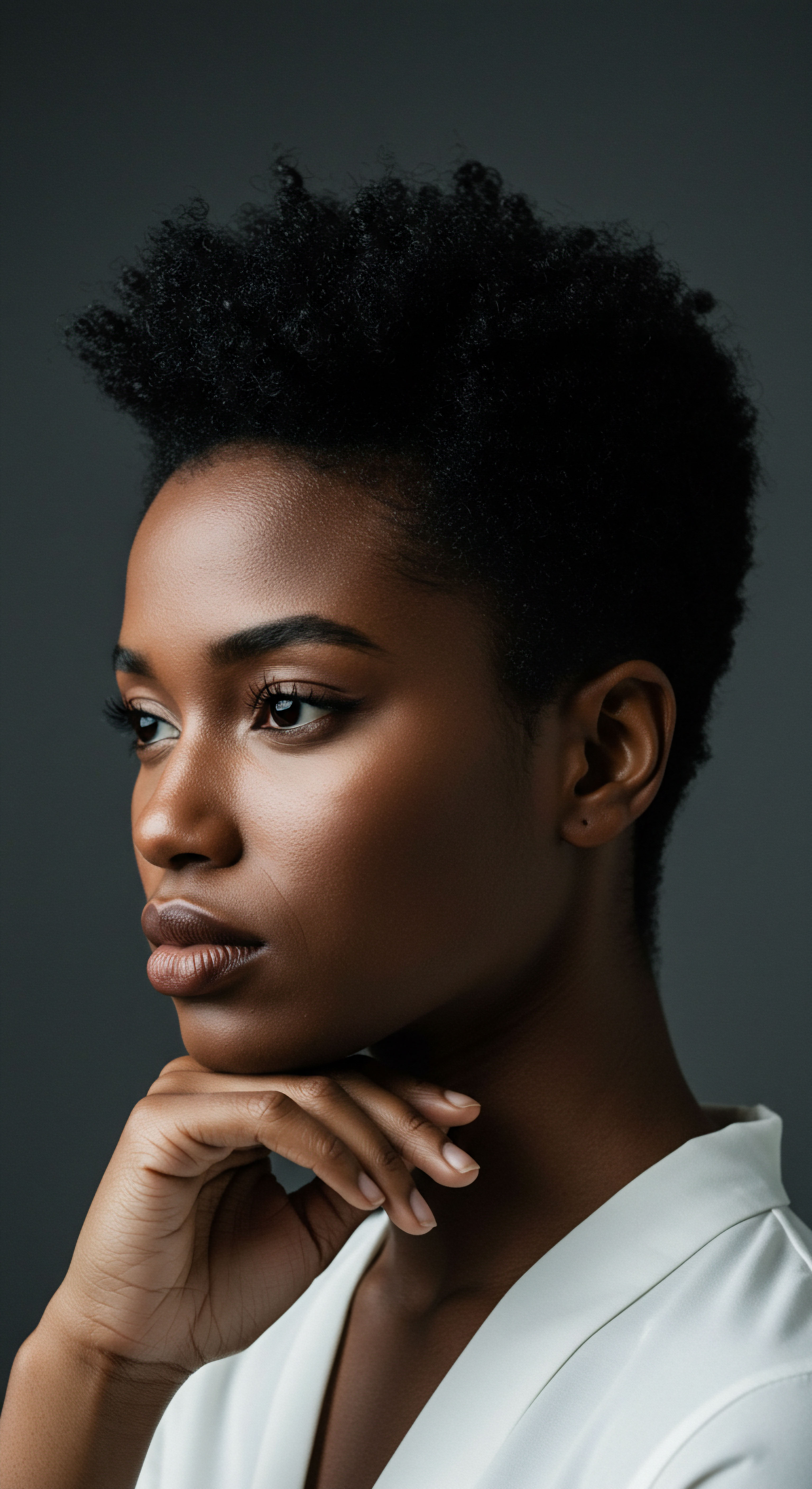
Relay
The narrative of modern nighttime hair protection extends beyond immediate comfort, unfolding into a complex interplay of material science, scalp biomechanics, and the enduring cultural significance of hair. To truly grasp the efficacy of these innovations, one must consider the microscopic interactions, the subtle shifts in moisture dynamics, and the broader implications for hair health equity. How does the science of advanced fibers intersect with the lived experiences of coil wearers, creating a new chapter in care that honors both heritage and progress?
The quiet revolution in nighttime hair protection for coils is not merely about swapping one fabric for another; it signals a deeper understanding of hair biology and the forces that compromise its health. This understanding, rooted in scientific inquiry, allows for the creation of materials that actively contribute to the well-being of coils, moving beyond passive protection to active preservation.

The Microscopic World of Hair and Fabric
At the microscopic level, the interaction between hair and fabric during sleep is a dynamic process. The hair cuticle, a protective outer layer of overlapping scales, is particularly susceptible to mechanical stress. When hair rubs against a rough surface, these scales can lift, chip, or even detach, leading to increased porosity, moisture loss, and ultimately, breakage. Coiled hair, with its unique structural geometry, experiences these effects more acutely due to its natural curvature creating more points of contact and thus more potential for friction.
Modern materials like silk and satin significantly reduce this abrasive interaction. The smooth, continuous surface of these fabrics minimizes the coefficient of friction, allowing hair strands to glide effortlessly rather than being dragged or caught. This reduction in friction directly translates to less cuticle damage, preserving the hair’s natural barrier and helping it retain its internal moisture. The low molecular weight of silk proteins, for example, allows them to penetrate hair strands, binding to keratin and forming a protective layer that prevents moisture loss.

Can Copper-Infused Fabrics Offer More Than Just Reduced Friction?
Beyond the well-documented benefits of silk and satin, newer material innovations are pushing the boundaries of nighttime hair protection. Copper-infused fabrics represent one such advancement, introducing additional properties that extend beyond mere friction reduction. Copper, a trace element, possesses inherent antimicrobial qualities.
Studies have shown that copper-infused textiles can actively eliminate bacteria on contact. While the direct impact on hair health is still an evolving area of research, the reduction of microbial growth on sleep surfaces could potentially contribute to a healthier scalp environment. A healthier scalp, less prone to bacterial imbalances, can indirectly support stronger, more resilient hair growth. This antimicrobial property is particularly relevant for individuals who experience scalp issues or those seeking an added layer of hygiene in their nighttime routine.
Furthermore, copper is a cofactor necessary for collagen synthesis. While research on direct hair benefits is ongoing, some studies suggest that copper-infused pillowcases may offer benefits for skin, such as reducing wrinkles and promoting skin brightness, which could hint at broader regenerative potential. The interplay between scalp health, skin health, and hair vitality is deeply interconnected, suggesting a holistic benefit from such materials.
| Material Cotton |
| Primary Benefit Breathability |
| Key Characteristic High absorbency, rough surface |
| Additional Properties Causes friction, wicks moisture |
| Material Satin (Polyester/Rayon) |
| Primary Benefit Friction Reduction |
| Key Characteristic Smooth weave, non-absorbent |
| Additional Properties Maintains moisture, reduces frizz |
| Material Silk |
| Primary Benefit Friction Reduction, Moisture Retention |
| Key Characteristic Natural protein fiber, smooth surface |
| Additional Properties Protein affinity to keratin, enhances elasticity |
| Material Copper-Infused Fabric |
| Primary Benefit Antimicrobial Activity |
| Key Characteristic Embedded copper particles |
| Additional Properties Potential scalp health, hygiene benefits |
| Material Modern materials offer targeted benefits beyond traditional options for coiled hair protection. |
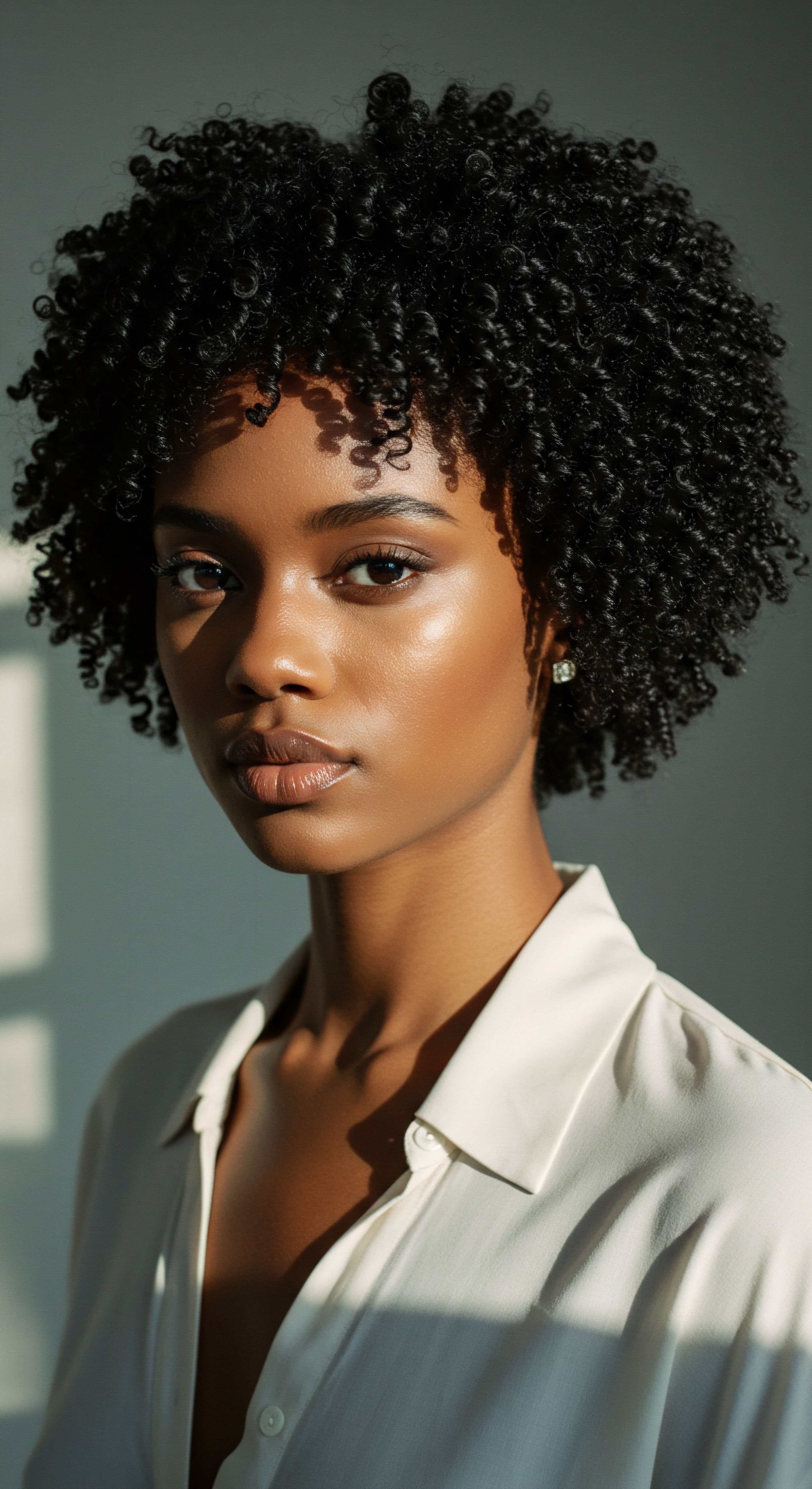
Beyond the Surface ❉ Long-Term Hair Health
The sustained use of modern materials for nighttime hair protection contributes to long-term hair health. By consistently reducing friction and preserving moisture, these materials help to minimize cuticle damage, split ends, and breakage over time. This creates an environment where coils can retain their length, strength, and natural luster. For those with highly textured hair, which is inherently more fragile and prone to dryness, this preventative care is particularly impactful.
Consider the impact on hair growth and retention. Hair growth is a continuous cycle, but consistent mechanical damage during sleep can negate the benefits of a healthy hair care regimen. By providing a low-friction environment, materials like silk and satin allow the hair to go through its natural growth phases with less interference.
This means more length retention and healthier strands over the long term. A consistent nighttime protection ritual, supported by advanced materials, can be a cornerstone of a holistic approach to hair health.
Modern materials offer more than superficial protection; they actively preserve the delicate cuticle layer, reducing long-term damage and supporting healthy hair growth.
The conversation around hair protection also intersects with sustainability. The production of synthetic fibers like polyester, often used in satin, can have environmental implications, including energy consumption and microplastic pollution. However, innovations in sustainable textiles are emerging, with companies exploring plant-based or compostable synthetic fibers from sources like corn starch and sugarcane, and the use of recycled materials. This ongoing development signals a future where hair protection can align more closely with ecological consciousness.
The choice of nighttime hair protection material becomes a thoughtful consideration of both immediate hair benefits and broader environmental impact. As the science of materials continues to advance, so too will the possibilities for safeguarding coils, weaving together ancient wisdom with cutting-edge innovation for truly holistic hair care.

Reflection
As the soft glow of dawn touches the horizon, we awaken to not just a new day, but a deepened understanding of our coils. The journey through the history and science of nighttime hair protection reveals a profound continuity, where ancestral practices meet the ingenuity of modern material science. Each strand, each coil, holds a story of resilience and beauty, now further shielded by the thoughtful design of fabrics that honor its delicate nature. This evolving narrative reminds us that true care is a blend of wisdom from the past and the quiet advancements of the present, allowing our hair to truly flourish, even in slumber.

References
- Bhushan, B. et al. (2014). “Friction Dynamics of Straight, Curly, and Wavy Hair.” Journal of Cosmetic Science, 65(2), 117-129.
- Cheung, J. (2021). “Satin Pillowcases Benefits for Hair and Skin.” Healthline.
- El-Messiry, M. et al. (2017). “Electric Static Charge Generated from the Sliding of Head Scarf Textiles against Skin and Hair.” Journal of Textile Science & Engineering, 7(1), 1-6.
- Hayes, L. (2025). “I switched to a satin pillowcase and my hair breakage dropped 70% in 3 weeks.” Glamour UK .
- Kim, H. J. et al. (2025). “Silk fibroin/polymer hybrid nanoparticles as a potential treatment for hair split-ends.” Journal of Industrial and Engineering Chemistry, 134, 1-10.
- McCleary, A. (2020). “The Copper Clothing Revolution Comes to Health and Care.” Copper Clothing Ltd.
- ResearchGate. (2024). “Polytetrafluoroethylene (PTFE) fiber reinforced polyetheretherketone (PEEK) composites.” ResearchGate .
- Schwartz, A. M. & Knowles, D. C. (1963). “Frictional Effects in Human Hair.” Journal of the Society of Cosmetic Chemists, 14, 1-13.
- Serione. (2024). “Silk Proteins Showdown ❉ Fibroin vs Sericin – Which Reigns Supreme in Hair Care?” Serione.
- Teck Resources. (2025). “Copper Products ❉ Who Knew?” Teck Resources.